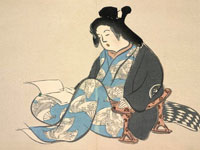Isaac Bell House [RI]
The Isaac Bell House is one of the best surviving examples of shingle-style architecture in the country. The house was designed by the firm of McKim, Mead, and White in 1883 for Isaac Bell, a wealthy cotton broker and investor. After passing through a succession of owners, the Isaac Bell House was purchased by the Preservation Society in 1996, and is today designated a National Historic Landmark. The Isaac Bell House was remarkably innovative when it appeared in 1883. It is a combination of Old English and European architecture with colonial American and exotic details, such as a Japanese-inspired open floor plan and bamboo-style porch columns.
The house offers tours.
